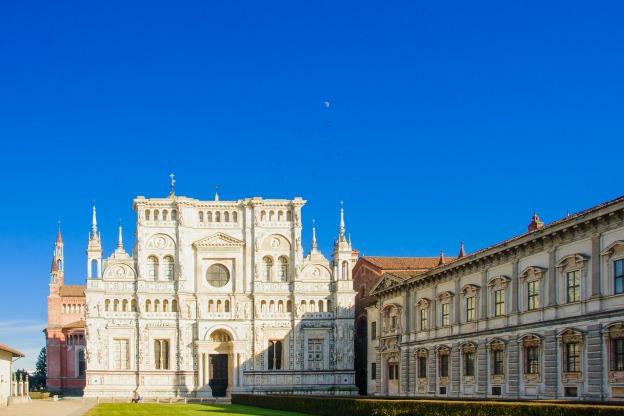It is one of the early Italian Renaissance’s most notable buildings, yet the Certosa di Pavia is not as well-known as other monuments from the same era. A real pity, as the impressive monastery complex, one of the largest in Italy, is less than an hour south of Milan, and makes for a great day trip from Italy’s fashion capital.
Construction of the Certosa di Pavia began in 1396 under Gian Galeazzo Visconti, first duke of Milan, who wanted to use it as a private chapel and mausoleum for the family, one of the wealthiest and most powerful in Europe. The grand structure was to have a strong visual impact, like the Duomo in Milan, which was also under construction at the same time, and was meant to be a testament to the family’s importance. In fact, Visconti hired the most famous architects and artists of the period to work on the monumental complex. Pavia was the second most important city of the Duchy; it was where the Duke held his court, which he planned to transform into one of the most opulent in Europe.
Hidden by thick woods, the Certosa appeared suddenly to pilgrims, either flooded with light from the sun or muffled by a blanket of fog.
Located near the former hunting grounds of the Visconti family, 8 km north of Pavia, the Certosa displays a mix of Gothic and Renaissance styles; the Church is built on a Latin cross plan, with a nave, two aisles and transept, which is typical of Gothic architecture. Its façade is famous for the vivacious decorations, including reliefs, inlaid marble and statues, as typical of Lombard architecture.
An elegant portal leads from the church into the Small Cloister, which features a small garden in the center, terracotta decorations, and a late-14th century lavabo in stone and terracotta. Similar decorations can be admired in the Grand Cloister, which is where the cells of the monks open up to. When the church was consecrated in 1497, the complex was entrusted to 24 Carthusian monks (certosini), double the standard number. Today, the Certosa is administered by Cistercian monks who guarantee its preservation and access to the public.




